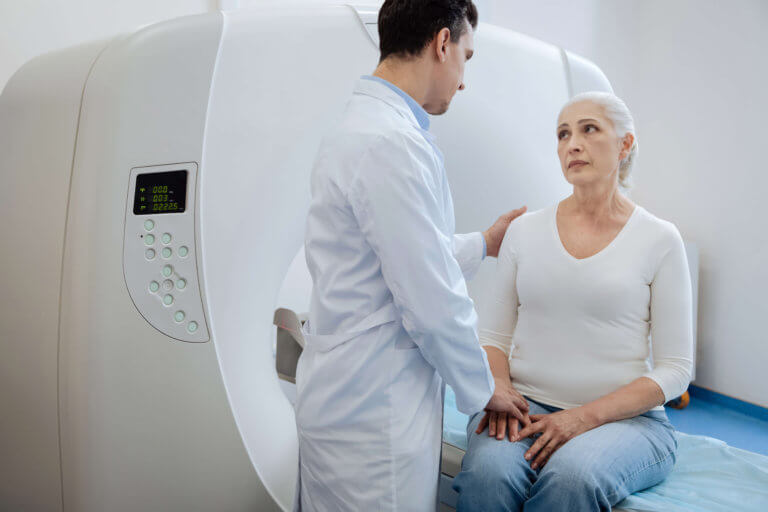How To Avoid Cancer Misdiagnosis & Save Your Life
What can you do to avoid getting the wrong diagnosis?
| | Reading Time: 6 minutes

More people die from medical errors, including misdiagnosis, than are killed in car accidents. What can you do to avoid getting the wrong diagnosis?Getting the wrong cancer diagnosis sets into motion a clinical approach that may or may not be proven effective. You may even get dangerous treatments that are unnecessary.
Misdiagnosis is more common than you think. A recent study found that about 12 million Americans are misdiagnosed every year. That rate of misdiagnosis is alarmingly high. Studies show at least 20 percent of the time patients receive treatment for the wrong condition.
In 1999, the Institute of Medicine reported that 98,000 people died every year from medical errors. In 2008, the US Department of Health reported 180,000 deaths due to medical errors. In 2013, the Journal of Patient Safety found that preventable adverse effects were the third leading cause of death in the United States, killing 210,000 people every year.
In 2016, researchers from John Hopkins University School of Medicine published the results of their research in the BMJ, claiming that 251,000 people die every year from medical errors in the US. Researchers and government officials have known about the problem for years but have done little to change it.
Early Cancer Diagnosis Has Led To Misdiagnoses And Over-treatment
Every year some 1.3 million people are diagnosed with cancer. Yet, at least 1 in every 71 cases does not have cancer. And, 1 in 5 cases correctly diagnosed as cancer gets the wrong cancer classification.
What’s wrong with how doctors diagnose cancer?
For one, the terms used for cancer are outdated. How most clinicians think about cancer has not kept up with the understanding of the evidence-based biology of cancer. The recent reclassification of a common thyroid “cancer” is one example.
“When doctors use the words ‘paradigm shift,’ we better listen.”
In April 2016, JAMA published a paper on misdiagnosed thyroid cancers with the subtitle, “A Paradigm Shift to Reduce Over treatment of Indolent Tumors.” When doctors use the words “paradigm shift,” we better listen.
The results of an international, multidisciplinary study found that a type of nodule in the thyroid gland called follicular variant of papillary thyroid carcinoma, previously diagnosed as thyroid cancer, rarely develops into cancer.
The incidence of follicular variant of papillary thyroid carcinoma has increased 2–3 times in the past 20–30 years. Why? Conventional medical wisdom supposes that doctors have better ways to diagnose thyroid nodules. But this reasoning does not explain the increased occurrence of thyroid cancer in general, once a rare condition. Is there a piece to this puzzle that doesn’t quite fit?
Besides an outmoded understanding of cancer biology, another reason for over-treatment is outdated standards of care. Most doctors follow approved practice guidelines. These guidelines often call for surgical removal of the entire thyroid gland, which also eliminates the parathyroid glands. The same argument applies to some types of breast, prostate, cervical, and uterine cancer. But if we step back to look at this reasoning, does it really hold up?
A Different Perspective
Here are some examples from my practice of patients who were misdiagnosed, but had the sense to seek another opinion before submitting to wrong treatments:
A 35-year-old man was told by three urologists that he had prostate cancer and needed immediate surgery. The only test used to determine his cancer was the PSA, which was slightly elevated, and a biopsy that showed “atypical” cells that may or may not have been cancer. He had no urinary tract or prostate gland symptoms. I ordered an MRI of his prostate, which showed no cancerous changes. I followed his PSA levels every 60 days for six months while he took natural medicines for prostate health. His PSA level normalized after two months and remained healthy for three years. He remains without symptoms and cancer free.
A 60-year-old woman was told she had breast cancer but refused radical mastectomy. Her gynecologist informed her that the tiny lump was suspicious and that her biopsy suggested cancer. She opted for a wait-and-see strategy but actively followed the process. She changed her diet and lifestyle and utilized natural therapies. I monitored her tumor markers every six months and she had a breast MRI every year. After five years, the small lump has not changed, her tumor markers remain normal, and her MRIs continue to be normal.
A 55-year-old woman was told she had breast cancer. Her surgeon scheduled full mastectomy immediately. However, she had fibrocystic breast for years and was diligent about her mammography and breast ultrasounds. Nothing suspicious. Her biopsy was normal. Her tumor markers were normal. I ordered a breast MRI, which showed healthy tissue. In fact, she had no sign of cancer at all.
A 32-year-old Chernobyl exposure victim from Poland immigrated to Los Angeles, where she was told that she had thyroid cancer. This patient said that in Russia and Poland, radiation exposure caused an increase in thyroid tumors, but many did not develop into cancer. However, her medical reports revealed strong evidence that she had the early stage of thyroid cancer. She wanted to try natural therapies. After two years of working with her, she was cancer free.
Why Cancer Gets Over-Diagnosed
Treating cancer costs more than any other disease. In the US, cancer treatments cost over $89 billion annually. Insurance costs for individual patients are as high as $30,000 per month. By 2020, medical therapies for cancer are expected to reach $158 billion. Is it possible that doctors put profit ahead of patients?
“They get some right some of the time; and partly or entirely wrong the rest of the time. It’s the nature of the effort that it takes to find the best answer to hard questions.”
In 2005, John Ioannidis, M.D. of Stanford University published the results of his research on why medical research results are often false. In fact, more than half of studies end up proven wrong or not useful. Doctors have no excuse for getting things wrong as much as they do. Sooner or later, the scientific and medical journals publish results of clinical trial reviews called meta-analysis or systematic reviews.
For example, in 2013, the Cochrane Library published the results of a systematic review on the usefulness of prostate cancer screening using the PSA blood test. The conclusion was that prostate screening was not useful for the majority of men. Most doctors no longer use PSA screening.
That’s the way experts learn; progressing slowly, feeling their way through difficult problems. They get some right some of the time; and partly or entirely wrong the rest of the time. It’s the nature of the effort that it takes to find the best answer to hard questions.
Human error is unavoidable. Doctors and healthcare workers are human after all. But, that does not mean that you have to follow your doctor’s advice indiscriminately or unquestioningly take every prescription drug prescribed for you.
“Besides profit and poor science, another reason cancer is over treated is the desire to do good.”
The medical establishment doesn’t change quickly, so don’t expect improvements overnight. Based on the statistical trend listed above, the problem is likely to get worse before getting better.
Besides profit and poor science, another reason cancer is over treated is the desire to do good. For decades, conventional medical wisdom stood by the idea that early detection, followed by aggressive treatment, resulted in a better outcome for patients.
A 2014 study involving over 60,000 men diagnosed with prostate cancer, found that suppressing testosterone levels with drugs was unnecessary, harmful, and did not prolong survival.
It turns out that all cancers are not created equal. There are low-risk types that never develop into active cancer. Others are not cancer at all, but merely nodules or cysts. So why should we continue aggressive, side-effect heavy treatments? Is there another way?
How Misdiagnosis Can Be Prevented
In my practice, I take these statistics into account when first seeing a new patient. I not only ask my patient about their complaint but also inquire if they received a medical diagnosis, and if so from what kind of doctor. If they have a medical diagnosis, I want to see the clinical notes and pathology reports. It’s not that I don’t trust other doctors, I only recognize that there is always a margin of error.
Here are a few examples of how I reduce error:
- If my patient takes prescription drugs, I want to see the bottle it comes in. The same goes for nutritional supplements. I ask them to “brown bag” all medications and supplements so that I can read the labels myself.
- I double check the patient’s name and date of birth from my records, both their paper chart and electronic files, and compare them to the patient’s information on their lab tests, medical reports, and prescriptions.
- A good doctor scans the journals for the latest information to see which tests and what treatments are best for the patient. But, even good studies can go wrong. Peer-reviews can be just as important.
How To Protect Yourself From Misdiagnosis And Medical Errors
Here are some questions and rules to follow when you have a serious illness:
- Does your doctor keep up with the medical journals?
- Ask your doctor to explain your diagnosis and treatment in plain language.
- Is your doctor’s advice consistent with the diagnostic evidence?
- Inquire about alternatives. Ask if there is good evidence for trying another approach.
- For severe conditions, get a second, or even third, opinion.
- Read up on your diagnosis. Cover a range of websites and medical journals. Search on Google Scholar or PubMed.
Even a good doctor can wander off track. Be extra wary if your doctor’s advice fits these categories:
- It only fits the current standard of practice and does not take into consideration individual differences or the most current research.
- It’s supported by pharmaceutic or medical device companies that stand to gain high profit from treatment for your type of diagnosis.
- Its aim is solely to prevent future occurrence or possible worsening of a potentially catastrophic illness.
- It uses claims of “world-class.” Even pundits and experts with impressive credentials get it wrong much of the time. Überexperts are just as prone to error as researchers from smaller labs and unknown universities.
Protect yourself and your loved ones as best you can, and in the meantime, we as doctors need to be working from the inside to change the culture of medicine. All of our lives depend on it.


